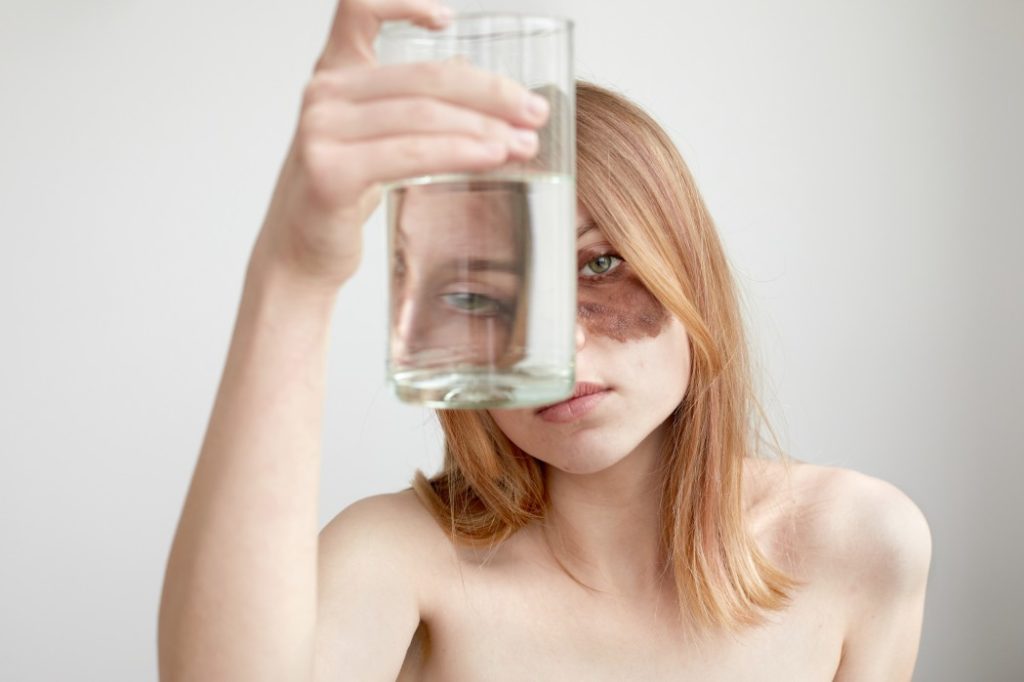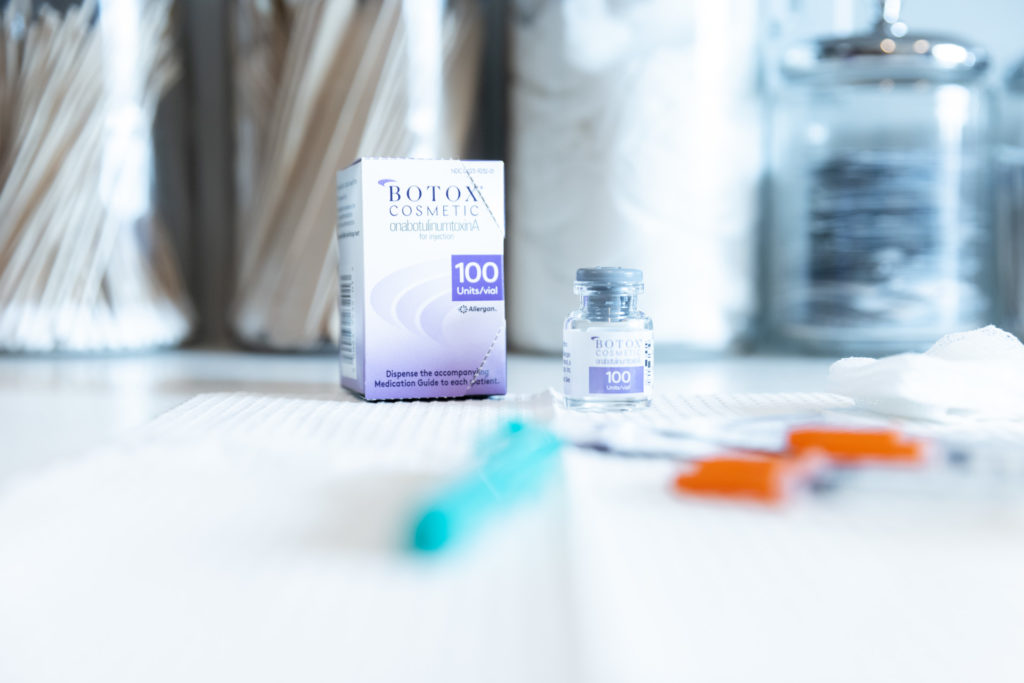
Melasma is a common skin problem that causes brown to gray-brown patches to appear on the face. This is more than likely to affect women and people with darker skin tones, melasma affects more than six million women in the United States.
The exact cause of melasma is unclear, common triggers include: sun exposure, pregnancy, birth control pills, and cosmetics.Melasma usually appears on the cheeks, forehead, chin, bridge of the nose and above the upper lip, but it can also appear on the forearms or neck. Although it is not harmful, many people dislike the way melasma looks and seek treatment to make it less noticeable.
If you have melasma, Donna Fay recommends the following tips for achieving a more even skin tone.
1. Wear sunscreen daily, one of the most common treatments for melasma is sun protection. The reason being is that sunlight triggers melisma. So it’s important to wear sunscreen every day, even when it’s cloudy and especially after swimming or sweating. Choose a sunscreen that offers broad-spectrum protection, an SPF of 30 or more, with a zinc oxide and/or titanium dioxide to physically limit the effects of the sun on your skin. You should apply sunscreen 15 minutes before going outside and reapply at least every two hours.
2. Wear a wide-brimmed hat when you’re out. A recent study in the journal Nature, illustrates sunscreen alone may not give you the protection you need. Whenever possible, find shady spots and wear protective clothing in addition to applying sunscreen.
3 Choose gentle skincare products. Skin care products that don’t sting or burn. These products will irritate the skin and may worsen melasma.
4. Avoid waxing, waxing may cause skin inflammation which can worsen melisma. So it’s important to avoid waxing areas of the body affected by the condition. You should ask your dermatologist about other types of hair removal that may be right for you.
5. Try a skin lightening cream. There are several skin lightening creams available over-the-counter. They all work by reducing melanin, which is the pigment that causes tanning and sunspots.
– Look for products containing effective skin-lightening ingredients such as kojic acid, glycolic acid, alpha hydroxy acids, vitamin C or arbutin.
-These products tend to be safe to use, but be sure to follow the directions on the packaging and to stop immediately if your skin has a negative reaction.
-Never use a skin lightening cream that contains mercury as the active ingredient. Mercury based skin creams are banned in the US.
6. Use Retinoid creams these are made from an acidic form of Vitamin A and can effectively lighten skin through exfoliating and speeding up the cell turnover.
-Retinoid creams can lighten skin and clear discoloration, they are also effective at smoothing out fine lines, wrinkles, plumping up the skin, and making it look brighter and younger. In higher concentrations, it can also help to clear acne.
-Retinoid creams may cause dryness, redness and flakiness at first. But these symptoms should subside once your skin gets used to the product. Retinoids also make your skin more sensitive to sunlight, so you should only apply them at night and wear sunscreen during the day.
-Retinoids are only available with a prescription, so you should make an appointment with your dermatologist if you are interested in pursuing this treatment. However, a less potent version of retinoid cream, known as retinol, is available as an over the counter beauty product.
7. Consider using hydroquinone, as it’s a highly effective skin bleaching cream that can be used to lighten large areas of skin, or to bleach sunspots and moles.
-Although hydroquinone is FDA-approved as a skin lightener in the US, it has been banned in parts of Europe and Asia. This is due to research that claimed the ingredient was a potential carcinogen. It can also cause long lasting skin discoloration.
-Therefore, the decision to use a hydroquinone-based product should not be taken lightly. We advise you to discuss treatment with your doctor or dermatologist first. Concentrations up to 2% are available over the counter, while stronger concentrations (up to 4%) require a prescription.
8. Try a chemical peel; these can be very effective at lightening the skin. How they work is they burn away the top layers of skin, which is highly pigmented or discolored. When the outer layer of skin is removed it reveals a fresher, lighter-colored skin underneath.
-With a chemical peel, an acidic substance like alpha hydroxy acid , is applied to the skin and left to sit for 5-10 minutes. The peel may cause a tingling, stinging or burning sensation on the skin. And can often leave it looking red or swollen for a couple of days afterwards.
-A series of chemical peels done 2 to 4 weeks apart is usually recommended. During this time it is important to avoid the sun and to wear sunscreen, as your skin is extra sensitive.
9. Try microdermabrasion. This is a good alternative option for people whose skin is sensitive to acid peels and creams. It essentially exfoliates the skin, removing dull, darker layers and leaving skin brighter and fresher.
-During the treatment, a small closed vacuum with a rotating diamond tip is applied to the face. This removes dead skin cells which are sucked into the vacuum.
-The treatment usually takes between 15 and 20 minutes, although 6 to 12 minute treatments may be necessary to achieve noticeable results.
-Some people may experience a little redness or dryness after the treatment. In general, microdermabrasion has fewer side effects than other treatments.
10. Lemon juice as the citric acid in lemon is a natural bleaching agent, which can help to lighten the skin.
– Squeeze the juice from half a lemon and dilute with water. Next, dip a cotton ball in the liquid and apply the lemon juice to your face, or where you wish to lighten the skin.
– Leave the lemon juice to sit on your skin for 15-20 minutes. Stay inside during this time the reason is the juice makes your skin hypersensitive to sunlight.
– Rinse your skin when you’re done, then apply a good moisturizer since lemon juice can be very drying. Repeat this treatment 2-3 times a week for best results.
11. Give turmeric a try. Turmeric is an Indian spice that has been used in skin lightening treatments for thousands of years. It is believed to inhibit melanin production, thereby preventing the skin from becoming tan.
– The first step is to mix turmeric with some olive oil and chickpea flour until you form a paste. Then apply the paste to the skin using gentle circular motions, this will exfoliate your skin.
-Next, leave the turmeric paste to sit on your skin for 15-20 minutes before rinsing off. The Turmeric can possibly stain your skin a slight yellow, but this should wear off quickly.
– Do this once or twice a week for best results.
12. Raw potatoes are believed to have mild bleaching properties due to their high vitamin C content. Vitamin C is used as a lightening ingredient in many over the counter skin creams.
-To try start with a raw potato and cut it in half, then rub the cut side of the potato over the skin you wish to lighten. Leave the potato juice to sit on the skin for 15-20 minutes before rinsing.
-You’ll need to repeat this several times a week in order to get any beneficial results. Also in substitute of a potato you could use a tomato or cucumber, since both of these also have a high vitamin C content.
13. Try coconut water. Some claim that coconut water is an effective skin lightener and it also makes skin supple and smooth.
-To use, simply dip a cotton ball in the liquid and rub the coconut water over the skin you wish to lighten. Coconut water is natural and gentle, so there’s no need to rinse it off. Sometimes melasma can fade on its own, particularly if it is triggered by pregnancy or birth controls.
After a woman has her baby or, if she stops taking the birth control, melasma can fade. However, if your melasma does not go away or you want to keep taking birth control pills, you should see a board-certified dermatologist to discuss available treatments for melisma. Like prescription medications or in-office procedures.




